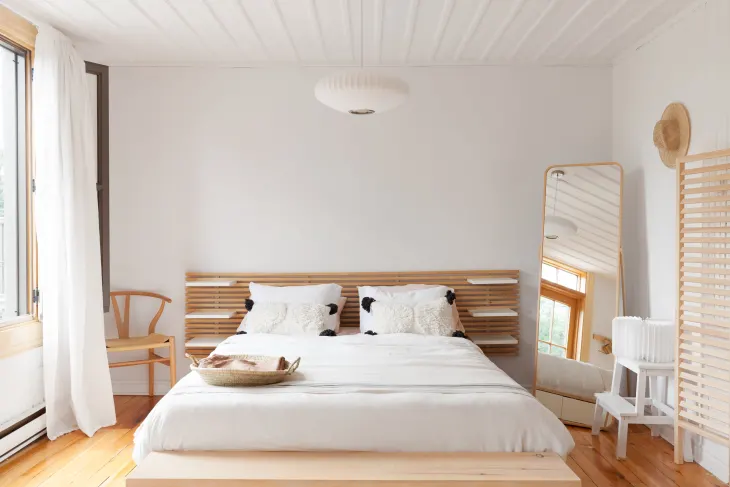Do you always get the recommended eight hours of sleep or spend most of this time tossing and turning in bed? Most people have insomnia, and although its root cause isn’t always clear, it’s often associated with a poor sleeping environment or stress and anxiety. If you’ve had a long day at work, it’s normal to feel stressed out or anxious. However, you can still get a good night’s sleep by designing your bedroom to promote positivity, rest, and relaxation.
1. Choosing Calming Colors
The colors you use in your bedroom, for both the walls and bedding, can affect your mood, and in turn, your mood affects your sleep. Although it’s tempting to use any color in your room just for aesthetics, choose a color that’ll help you feel relaxed; some colors stimulate the mind and make you more active.
It’s important to understand how different colors affect your mood so you can manipulate them for your room to ensure better sleep quality. Examples of calming colors you can use in your room include blue, beige, white, light pink, and green. You’ll be thankful when you get the right amount of sleep after replacing the loud colors in your room with calming ones.
2. Clean and De-Clutter Your Space
Your bedroom can feel stressful and overwhelming if you have clutter all over the space. The clutter makes it harder for you to relax when going to bed. You don’t necessarily have to hire a cleaning crew to de-clutter your space. You can improve your sleep by simply organizing everything in its rightful place.
How often do you clean your bedding? Your bedding is crucial in ensuring quality sleep; about 75% of people testify they get a more comfortable night’s sleep on sheets with a fresh scent. Therefore, cleaning your bedding once a week is essential.
3. Invest in a Good Mattress and Bed
It’s recommended that you change your mattress every seven to 10 years, but listen to your body. If you’re uncomfortable in bed and always wake up tired in the morning, you might need a new mattress regardless of how long you’ve had it. Invest in a new mattress that’s not only long-lasting but also comfortable. This is so crucial since you’ll spend almost a third of your day lying on it.

When choosing a bed frame for your bed, choose one that’s durable and offers the much-needed comfort for a good night’s sleep. A good example of such a frame is a wooden bed frame. According to statistics, your solid wood furniture will start to show signs of aging, such as fading or cracking, after about 10 to 15 years.
4. Bring in Calming Scents
People often use flowers as decorative pieces when designing their bedrooms. According to research conducted by About Flowers, 23% of respondents confessed they bought flowers “just because.” When picking flowers for your bedroom, the scents matter.
Choosing an overwhelming scent could make it difficult to get quality sleep. Use calming scents when burning a candle or using flowers to decorate your room. Examples of ideal calming scents to enhance sleep include chamomile, cedar, and lavender.
5. Choose the Right Size and Arrangement
Creating balance is vital when designing your bedroom. The bed is the focal point of your bedroom. Is climbing too high that you need to use a stepping stool? Or is it too big that you can hardly move across the room? Choose a bed that’s proportionate to you and the size of the room.
The bedroom is where you retreat every night. Since experts recommend at least seven hours of sleep daily, making it the most comfortable space in your home is wise. As much as aesthetics matter when designing your primary bedroom, seek to prioritize a functional space that’s relaxing and calming. While transforming the room will cost you, you’ll be guaranteed a comfortable sleep throughout the night.






